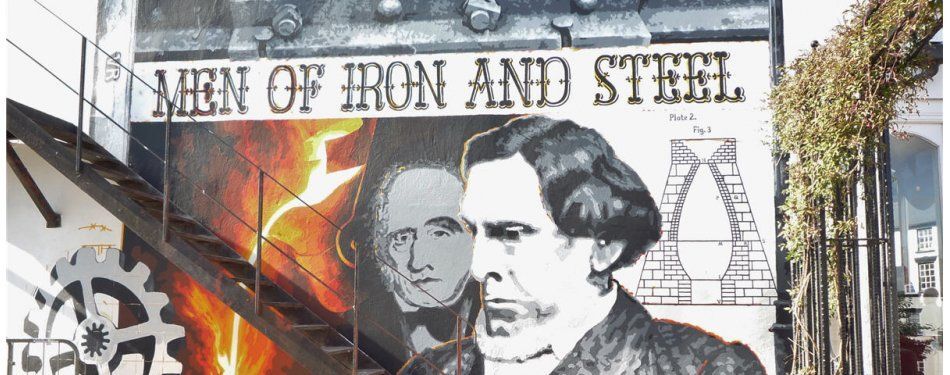Bessemer steel 2.0
Robert Forester Mushet (8 April 1811 – 29 January 1891) was a British metallurgist and businessman. Robert spent his formative years studying metallurgy with his father and took over the management of Darkhill Ironworks in 1845. In 1876 he was awarded the Bessemer Gold Medal by the Iron and Steel Institute.
In the summer of 1848, Mushet received a lump of white crystallised metal which was found in Rhenish Prussia. He recognized this lump of metal as an alloy of iron and manganese and, as such, of great value in the making of steel. It was called, from its brightness, spiegeleisen (‘looking-glass iron’) Mushet carried out experiments with the metal, discovering that a small amount added during the manufacture of steel rendered it more workable when heated.

Photo: visitdeanwye.co.uk
In 1856, he realised the true potential of this property when a friend brought him a piece of steel, made using the Bessemer Process, asking if he could improve its poor quality. Mushet’s solution was simple, but elegant; he first burnt off, as far as possible, all the impurities and carbon, then reintroduced carbon and manganese by adding an exact amount of spiegeleisen. This had the effect of improving the quality of the finished product, increasing its malleability – its ability to withstand rolling and forging at high temperatures.
In 1857 Mushet was the first to make durable rails of steel rather than cast iron, providing the basis for the development of rail transportation throughout the world in the late nineteenth century.
In a second key advance in metallurgy Mushet invented ‘R Mushet’s Special Steel’ (RMS) in 1868. It was both the first true tool steel and the first air-hardening steel. Previously, the only way to make steel hard enough for machine tools had been to quench it, by rapid cooling in water. With self-hardening (or tungsten) steel, machine tools could run much faster and were able to cut harder metals than had been possible previously. RMS was the forerunner of high speed steel.
About the Author:

Bruno Dursin – Managing Director at Believe in Steel. Bruno has more than 30 years of experience in promoting steel & steel solutions. His clients benefit from his extensive network within the building industry.



